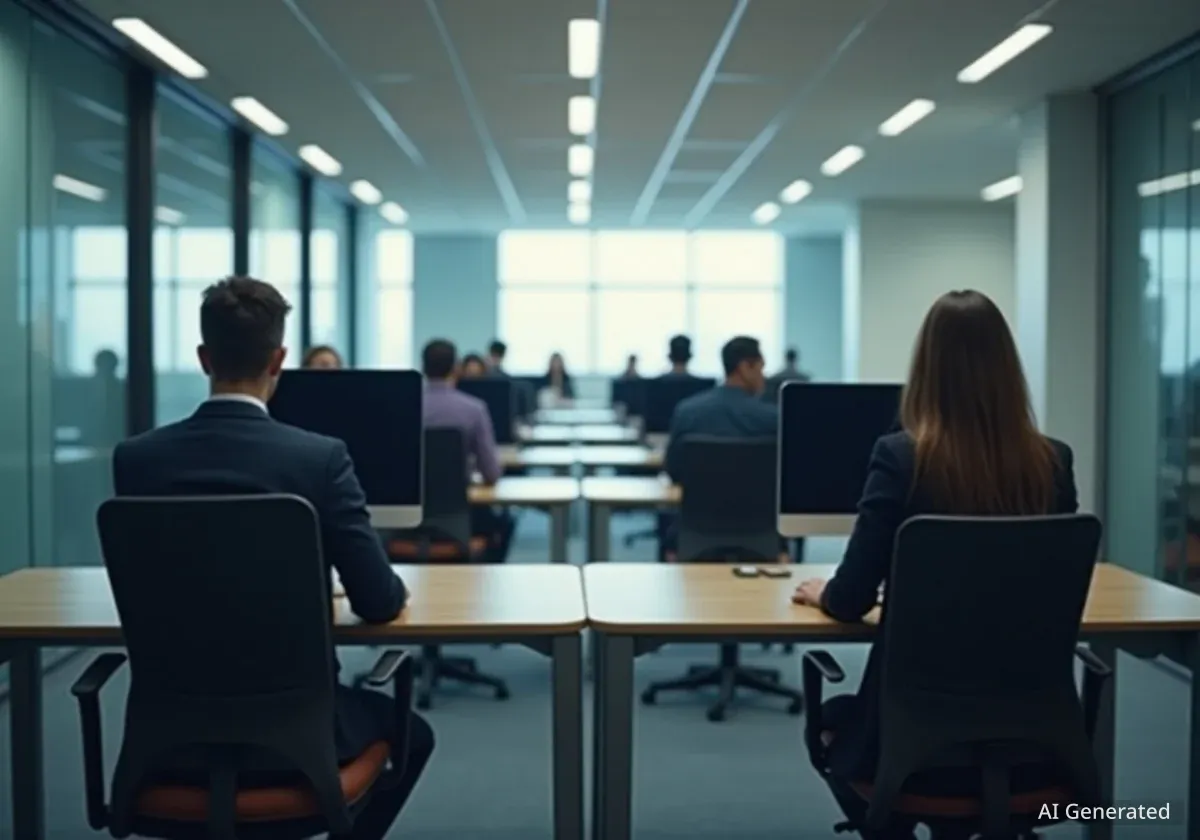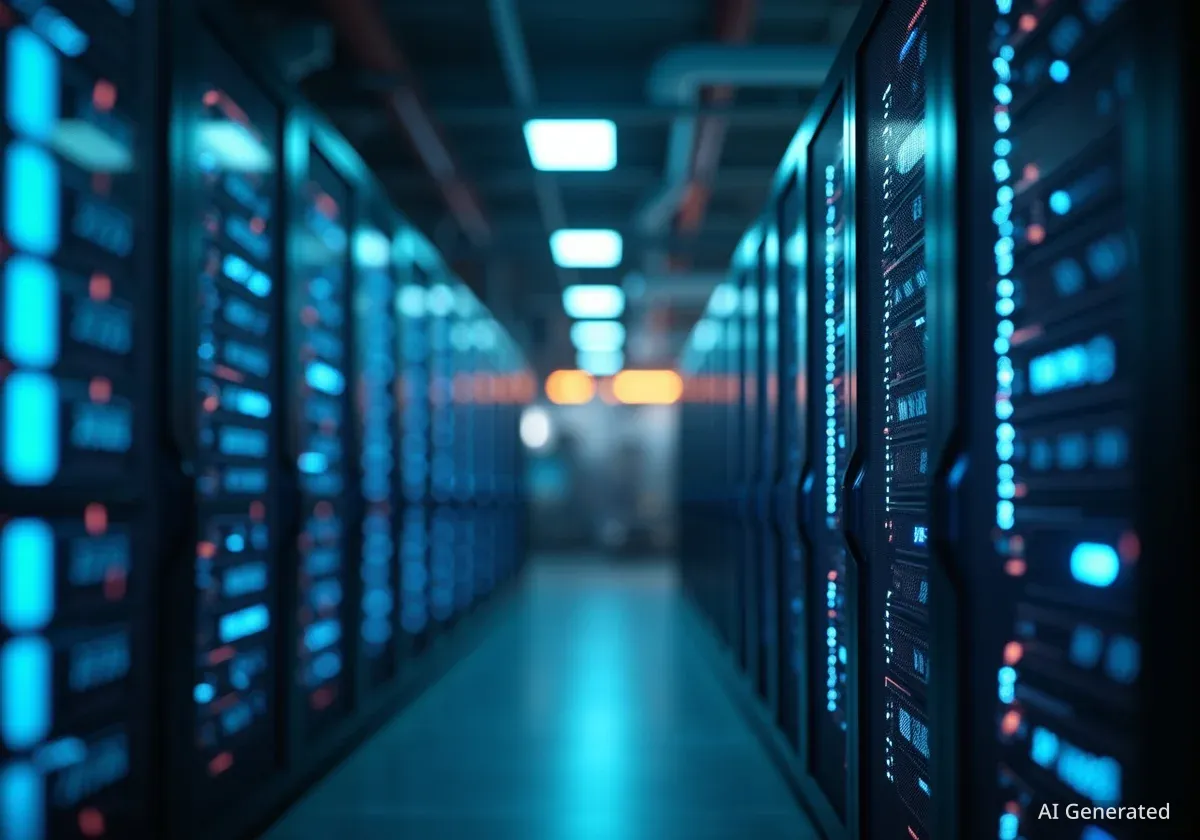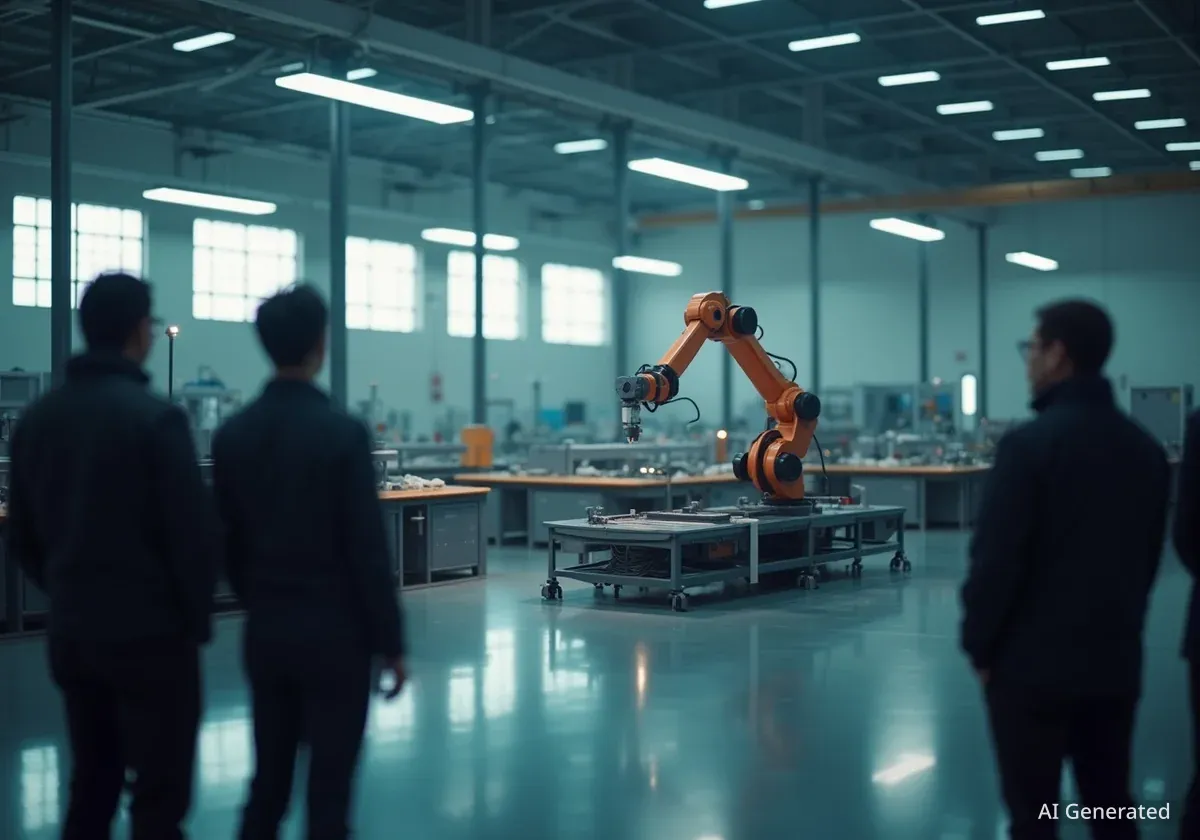The U.S. job market has not experienced significant disruption from artificial intelligence following the release of ChatGPT in late 2022, according to a new academic study from Yale University. The findings suggest that despite widespread concerns, the immediate impact of generative AI on employment has been minimal.
Researchers at Yale's Budget Lab concluded that changes to the mix of jobs in the American economy have been slow, especially when compared to major economic shifts of the past. The report indicates that the widespread transformation of the workforce by AI, if it occurs, is more likely to take place over decades rather than a few years.
Key Takeaways
- A Yale University study found no discernible disruption to the U.S. job market since ChatGPT's release in November 2022.
- Historical trends show that major technological changes typically take decades to fully impact the workforce.
- The current rate of change in job types is described as "sluggish" compared to the shifts seen in the 1940s and 1950s.
- The report concludes that widespread anxiety over AI's immediate effect on jobs remains "largely speculative."
Analysis Shows Stability, Not Upheaval
Economists at Yale University's Budget Lab, in collaboration with the Brookings Institute think tank, conducted an analysis of the U.S. labor market. Their goal was to measure any significant shifts in the types of jobs people hold since the public introduction of powerful generative AI tools like ChatGPT.
The study found "no substantial acceleration in the rate of change in the composition of the labor market." This means that the transition of workers between different occupations has not sped up in a noticeable way since AI became a mainstream topic.
According to the report, the changes currently observed in the job market were already in motion before 2022. The introduction of advanced AI has not yet created a new, more rapid trend of job displacement or creation at a large scale.
"The picture of AI’s impact on the labor market that emerges from our data is one that largely reflects stability, not major disruption at an economy-wide level," the study stated.
Historical Precedent for Slow Adoption
The researchers noted that their conclusion is not surprising when viewed through a historical lens. Major technological revolutions rarely transform an economy overnight. The process of adoption, integration, and workflow transformation takes a considerable amount of time.
The Pace of Past Tech Revolutions
The study draws a parallel to the introduction of personal computers. "Computers didn’t become commonplace in offices until nearly a decade after their release to the public, and it took even longer for them to transform office workflows," the report explained. This historical example suggests that even transformative technologies require a long runway before their full economic impact is felt.
The analysis found that the current rate of occupational change is "sluggish" when compared to the significant workforce upheaval that occurred during the 1940s and 1950s. That era was marked by the economic effects of World War II and other major societal events, which caused rapid and dramatic shifts in employment.
Based on these patterns, the report suggests a cautious timeline for AI's impact. "Even if new AI technologies will go on to impact the labor market as much, or more, dramatically, it is reasonable to expect that widespread effects will take longer than 33 months to materialise," the authors wrote.
Contrasting Views on AI's Job Impact
The Yale study's findings stand in stark contrast to some of the more dramatic predictions made by technology executives. A primary concern surrounding generative AI is its potential to automate tasks currently performed by humans, leading to widespread job redundancies.
A Stark Warning from an AI Leader
In May, Dario Amodei, the chief executive of the AI company Anthropic, warned that advanced AI models could eliminate as much as half of all entry-level office jobs within the next five years. Such predictions have fueled public anxiety about the future of work.
The report acknowledges that certain sectors are considered more vulnerable to AI disruption. These include industries like newspapers, film-making, and business services such as accounting. However, the researchers point out that these sectors were already experiencing changes in their job composition before the recent AI boom.
The data indicates that while these industries may eventually see significant AI-driven changes, the trend has not sharply accelerated in the period since ChatGPT became widely available.
Potential Early Signals and Overall Conclusion
While the overall picture is one of stability, the report did flag one area for further observation. Recent data showed a divergence in the job mix between recent college graduates and their slightly older peers, aged 25 to 34.
The researchers suggest two possible explanations for this trend. It could be an early indicator of AI beginning to affect employment opportunities for early-career workers. Alternatively, it might simply reflect the effects of a generally slowing job market on new entrants.
Despite this potential signal, the study's main conclusion remains firm. The evidence for immediate, large-scale AI-driven job disruption is not present in the current economic data.
The authors emphasize that their findings do not rule out future disruption. Instead, they provide a data-driven snapshot of the current moment, suggesting that the transition will likely be more gradual than many have feared.
"While anxiety over the effects of AI on today’s labor market is widespread, our data suggests it remains largely speculative," the report concluded.





